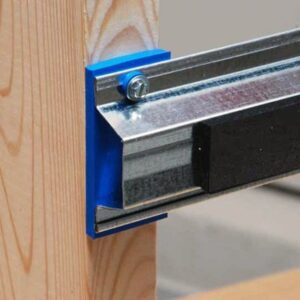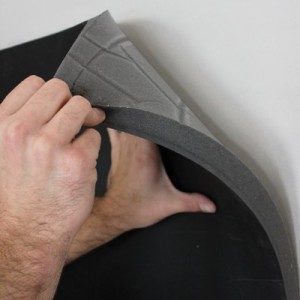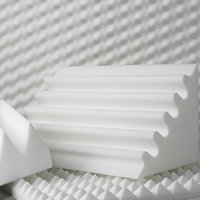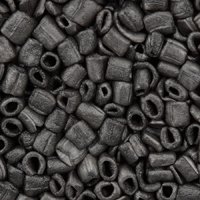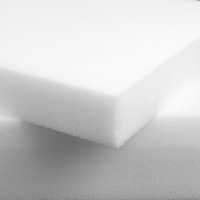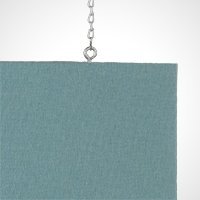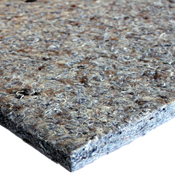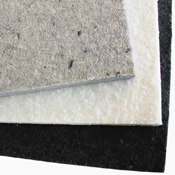-
Are Sound Issues Hurting Student Grades?
- Your students need to concentrate. They need to clearly hear what you’re saying. To get the most out of their education, they need classrooms that support learning. Larger lecture halls or rooms full of desks have large amounts of hard surfaces. The sound bounces off these hard surfaces and back into the room, causing echoes and unwanted background noise. If your classroom has an echo, students aren’t able to hear you clearly. They miss important information and their grades can suffer. Group learning time is less productive because students can’t hear each other. Another common classroom noise problem is caused by thin walls. With many classrooms built right next to each other, sound is transmitted through the shared walls. If the voices from the room next door can be heard in your classroom, students’ concentration is lost. Schools come to us for classroom soundproofing to provide a better educational experience for their students.
-
How Can Classroom Soundproofing Help Your Students?
- • Increase student focus by stopping noise from entering the classroom, which leads to better grades • Give teachers the freedom to teach without the worry of disturbing other classes • Improve sound quality within the classroom so students hear the entire lesson, ultimately learning more

Classroom Soundproofing Products
Classroom Sound Absorption Products
Key Takeaways:
- Design for acoustics from the start: Separate loud spaces (cafeterias, gyms, music rooms) from classrooms and plan layouts to minimize noise spill for better learning.
- Block noise between rooms (soundproofing): Use high-quality soundproofing materials for walls, ceilings, floors and doors to prevent sound from bleeding into classrooms.
- Reduce in-room echo (sound absorption): Cover hard surfaces with high-absorption treatments—acoustic wall panels and ceiling-hung baffles — to cut reverberation, lower overall noise, and boost focus.
How Noise Impacts Student Learning
The stakes are higher than ever in the classroom, and student performance is scrutinized to a degree formerly reserved for PhD programs. With millions of dollars and thousands of jobs at stake, schools have every incentive to provide the most productive learning environment possible.
Teachers and administrators have a thousand things on their minds as they go through the school day, so it’s perfectly understandable that some details would not get as much attention as the big stuff. A quality curriculum and classroom management skills are the most easily identifiable factors in student achievement, but those smaller details can contribute to student success.
Of course, when we discuss the learning environment, we’re being quite literal. The classroom itself plays a big role in a student’s educational experience — so how much thought has gone into the construction and design of the walls, floor, ceiling and windows of the classroom?
With the proliferation of distractions in the world today, the sanctity of the classroom must be preserved. Distractions impede the learning process and negatively impact our students’ academic performance. Considering the myriad of technological distractions that bombard our children on a daily basis, it’s important to create a learning environment that helps to improve their ability to focus on reading, writing and listening tasks, rather than contributing to the growing number of distractions our students must deal with.
We’ll explore how background noise can impact a student’s ability to perform in the classroom, and what options you have for improving classroom acoustics to reduce potential distractions, including some specific soundproofing solutions for schools.
Background Noise and Student Performance
Much has been made of the technological distractions students face, and the many different strategies and policies schools have developed to combat these distractions. Curricula have been developed to get right to the heart of the matter and help students focus on the most important aspects of any topic. Instructional methods have been developed, tweaked and scrutinized to challenge and engage students. We ask more from our students than we ever have in the past, so it’s only fair that we give them a learning environment in which they can be most successful.
With that said, we aren’t always aware of every factor involved in a learning environment. Decorations can be planned to stimulate or inspire students and plainly display classroom expectations. Surfaces and window treatments can create satisfactory lighting conditions.
Unfortunately, the same attention to detail isn’t often paid to the auditory environment in the classroom. If a classroom contains high or persistent levels of background noise, the learning environment is severely compromised.
Numerous studies have shown that a child’s ability to recognize speech sounds is negatively affected by even the smallest levels of background noise. Since most classroom learning still involves the verbal transmission of information, this impact on speech recognition is no trivial matter.
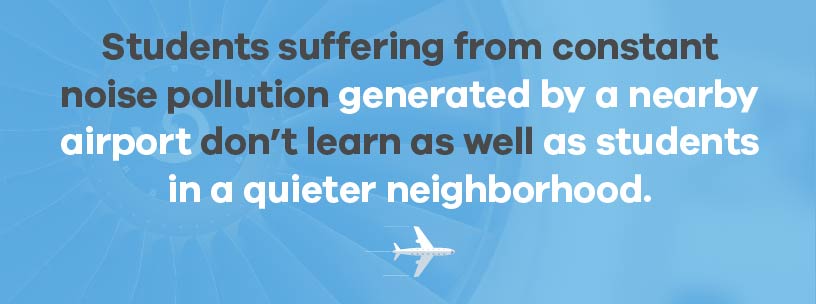
In one study conducted by Cornell University, students in a school that suffers from constant noise pollution generated by a nearby airport don’t learn as well as students in a quieter neighborhood. This study is just one of many that have explored the link between noisy environments and the learning process.
So why don’t we hear about this more often? Adults are better equipped to filter out background noise and recognize speech, so we might not even realize how much students are affected. Where a teacher or administrator might walk into a classroom and not notice what’s happening, a student is sitting at a desk and having a completely different auditory experience.
Another factor to consider is that a child’s auditory mechanisms don’t fully mature until ages 13-15, so younger students require a quieter learning environment. Even in the world of primary and secondary schools, there is no one-size-fits-all solution. Younger students require quieter classrooms than high school students do, at least from a speech recognition perspective.
Somewhere, a thousand elementary school teachers just rolled their eyes at the very concept of a “quiet elementary school classroom.” But think about what this means: regardless of instructional style, a vast majority of the learning that goes on in a classroom relies on verbal communication.
Whether it’s a teacher speaking to the students, or students working on a collaborative assignment and speaking to each other, students acquire information verbally. And, as younger students are still working on their language acquisition skills, being able to hear the speech of their teacher and fellow students is clearly of paramount importance.
In addition to speech recognition and concentration, background noise can increase stress levels, which can impact many aspects of our health, as well as memory and information retention. So we’re not only talking about a difficulty in understanding the lecture, but we also see effects on student learning in the areas of concentration and recall.
A loud learning environment can also negatively impact the health of the teacher. A louder environment requires the teacher to speak louder, which can lead to vocal fatigue and other long-term issues. Increased stress levels caused by higher environmental noise levels will also be harmful for the teacher in the long run.
The Three Kinds of Noise in Classrooms
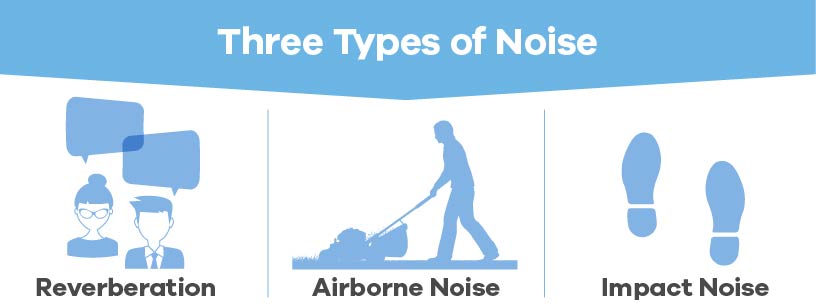
Now that we’ve established the importance of reducing the distractions caused by unwanted background noise, it’s time to discuss the sources of that background noise. Each type of background noise has its own set of characteristics and strategies for dealing with it.
Reverberation
Reverberation refers to the noise that bounces off the surfaces of a room. Any noise occurring in the classroom in the form of papers rustling, side conversations or chair movement will be reflected back toward the students. With how restless students tend to be, a classroom can be a noisy place even when the teacher is the only person talking.
Reverberation noise can interfere with speech recognition by muddling the speech that reaches your students’ ears. Naturally, impaired speech recognition will negatively impact educational achievement.
Airborne Noise
Airborne noise broadly refers to any noise sources that originate from outside the room: a noisy hallway outside a library, the conversations in the classroom next door that can be heard through the wall or a lawn mower outside the window.
Airborne noise can be a distraction, but that doesn’t make it any less detrimental.
Impact Noise
Impact noise refers to the noise you hear from above: a desk moving, footsteps of classes changing, etc. Given what we’ve been discussing so far, it’s not difficult to see how these noises could be a problem, too.
Noise is an inescapable part of the classroom. If you’re serious about trying to minimize noise-related distractions, what are your options? Either improve the noise reduction in your classroom or turn every day into silent sustained reading. The only problem with the SSR plan: ambient noise negatively affects concentration and attention span, as well.
Where Does the Sound in Classrooms Come From?
The most obvious sound source is the talking that goes on inside the classroom. When students work in groups, the noise level in the classroom can spiral out of control. In order to hear group members over the rest of the class, they must talk louder. As each group gets louder, the noise levels can not only affect concentration and understanding, but they can reach dangerous levels. Don’t believe us? Spend some time in a middle school classroom and see for yourself.
Classrooms generally contain a lot of hard surfaces: cabinets, desks, cinder block walls, whiteboards and chalkboards, windows and even tile floors. These hard surfaces make cleaning the classroom much easier, but these hard surfaces reflect nearly all of the sound that bounces off of them, and they reflect that sound back into the room and into the ears of the students and teacher.
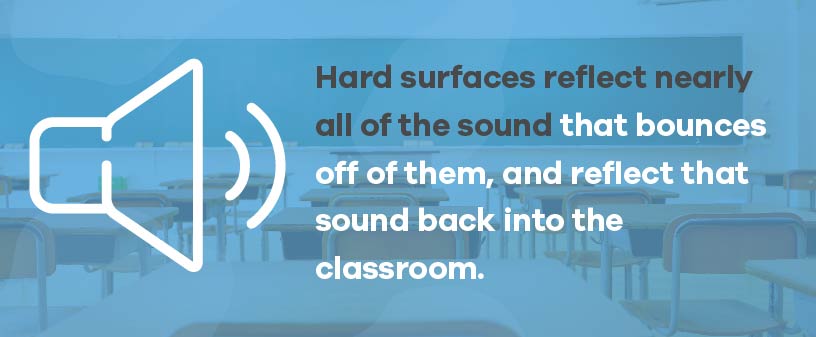
You’ve noticed the same phenomenon in your own home. Have you ever wondered why you sound so good when you sing in the shower? All of the sound you produce gets reflected back off the walls and creates an audio effect known as “reverb” — short for reverberation. This might make your singing voice sound wonderful, but it also helps to make it sound louder. This is not necessarily the effect you’re going for in a classroom full of students.
Sound sources inside the classroom can be dictated, if not controlled, by the teacher. However, external sound sources are a whole different story. Noise from adjacent classrooms, common areas, hallways and cafeterias can be a persistent distraction. These sound sources are obviously beyond your control.
How to Reduce Noise in Your Classroom
The last thing your teachers should do is to modify a carefully planned lesson to compromise for a noisy classroom environment. Your students should be active participants in the learning process and, for children, activity means noise. So if your teachers are constantly fighting noise, and your students are having a hard time concentrating, what can be done about it?
Ideally, the building was engineered with sound acoustic design in the first place. Effective acoustic design is a must for an effective learning environment. However, tens of thousands of schools fall short of the acoustic design standards for noise control. Effective acoustic design relies on several factors: building design with acoustic performance in mind, quality building materials and additional sound control measures.
1. Design The Building With Acoustic Performance in Mind
When building plans are developed, best practices will dictate that acoustic performance be taken into account. Mindful architects will plan the building layout to isolate louder spaces like auditoriums, cafeterias, gymnasiums and music rooms. Keeping these noisy spaces away from classrooms will help cut down on the ambient noise students must deal with when concentrating on their core subjects.
Architects generally factor in soundproofing for auditoriums because of the need for a high-quality acoustic environment in a performance space, but the same considerations aren’t always made for gymnasiums and cafeterias.
2. Use High-Quality Building Materials That Limit Noise
Even if you isolate the louder spaces, the very nature of sound ensures that it will still travel through solid structures and bleed into your classroom. High-quality building materials won’t transmit as much sound through the walls, floors, ceilings and doors. Higher-quality materials have better sound deadening properties, which means a learning environment free from distractions caused by airborne and impact noise.
Of course, there’s not much you can do about the building design and materials once the construction is finished, so what else can you do?
3. Invest In Passive Sound Reduction
As we have mentioned previously, hard surfaces contribute to the problem. The solution is to cover some of those hard surfaces with materials that have high sound absorption rates. This strategy can be employed in the classroom as well as larger spaces. Cafeteria soundproofing and sound reduction products can help to keep noise levels below dangerous levels inside the cafeteria during noisy lunch periods. This can also reduce the amount of noise that bleeds into the surrounding areas.
Soundproofing vs. Sound Reduction
This is a good time to explain the difference between soundproofing and sound reduction. Soundproofing a room keeps noise from escaping and bleeding into surrounding spaces. Soundproofing materials would be installed in the walls, either as insulation between rooms or in the form of soundproof doors and door sweeps.
Sound reduction products are designed to reduce the reverberation and echo off hard surfaces. This won’t prevent sound from traveling through walls, because the sound waves will hit the bare surfaces in between the acoustic panels.
Soundproofing Materials & Acoustic Panels for Classrooms
Acoustic treatments can completely transform the acoustic characteristics of any space. Acoustic panels for classrooms are most effective in managing reverberation noise, but they can be helpful with other types of noise as well. These panels can be placed around the room on walls, on cabinets and even hung from the ceiling.
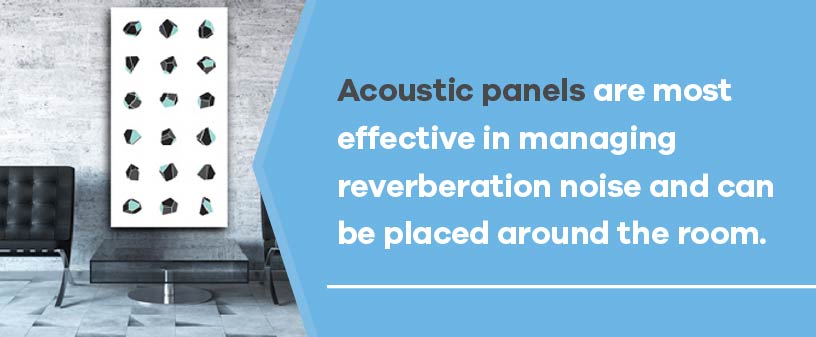
The different design options can help you choose a set of acoustic panels that fit into the layout of your space. We aren’t suggesting that your classroom needs to look like it came out of an interior design catalog, but you can certainly choose an acoustic treatment panel that doesn’t look like a complete afterthought in your classroom space.
We even have options that allow you to upload your own images, so you could transform your existing classroom decorations into dual-purpose sound-reducing acoustic treatments. If you’re more concerned with building code compliance than with interior design, we have fire-rated options to cover your walls, floor to ceiling.
School Soundproofing Options
If we have convinced you of the negative effects of noise on student learning and helped motivate you to look for some school soundproofing options, we can help you take the next step and decide what specific options work best for your school. No matter what your budget is, we can come up with a solution that will make a huge difference in the sound quality in your school.
Browse our website and contact us for ideas and suggestions to help improve the acoustic environment in your school. Whether you need acoustic panels, soundproof insulation or soundproof door kits, we can offer a solution that will meet your needs. Our helpful staff will answer all of your questions and help you navigate the process from beginning to end.
Soundproof Other Spaces

I just wanted to let you know that in the end, sealing the air spaces on this door worked just fine and took care of the problem.
I really appreciate you taking so much time to share your expertise with me, and in particular recommending I try the simpler solution before investing in more expensive noise barriers. That is a big credit to you and your business.
- Mike

